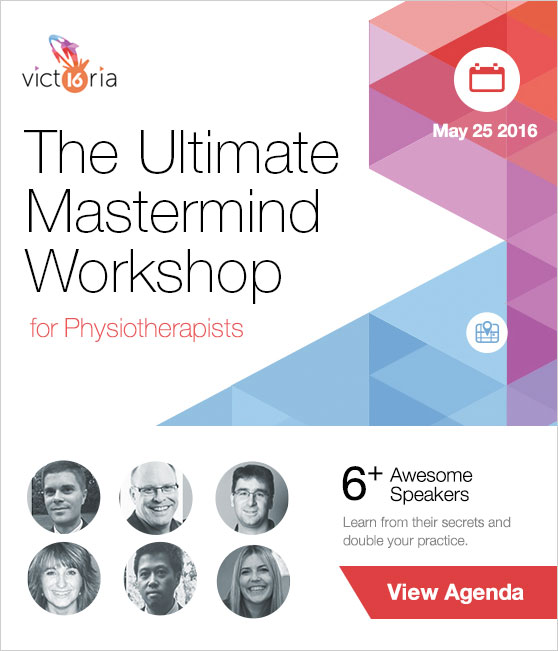By Maggie Bergeron
Chances are, you became a physiotherapist because you wanted to help people in some way. If you are like the majority of practitioners (and like I was a few years ago), you have not really acknowledged the undeniable importance of being an astute business owner. Your focus has overwhelmingly been on the art and science of physiotherapy and you spend your time, energy and money developing your clinical skill set. While I believe this is both important and enjoyable, I quickly learned, when opening my practice, that without the basics in business management I would not succeed.
Being an entrepreneur gives you just as much of an opportunity for personal development as being a clinician does. When I discovered this in my practice, I realized that I had a genuine passion for business and entrepreneurship because it rounded out my clinical practice and personal growth in so many ways. Shortly after building my clinical practice, I started a technology startup – healthSwapp – and started to develop my entrepreneurial skills on a different level.
Shortly after writing a very lengthy business plan for healthSwapp, I learned about the lean methodology and, in fact, gone are the days of long business plans. The lean movement, as professed by Steve Blank, Eric Ries and Asha Maurya, has helped to develop an approach to entrepreneurial management that seeks to minimize waste and reduce the risk of launching a new venture. These two ideas are critical for most entrepreneurs in today’s business climate.
Think Like An Entrepreneur
The essence of their ideas is that the early stages of a startup (or business) must be treated as a learning experiment. As stated by Blank: “A startup is an idea searching for a business model.” As an entrepreneur you are an investigator who seeks answers to gain a level of certainty that did not exist at the outset. Through a process of experimenting, learning and iterating, the entrepreneur can test the key assumptions underpinning the business.
While the lean movement has primarily been applied in technology startups, the same principles apply when building a clinic and busy practice. We may already know a lot about our customers (patients) through experience, but what we may not have considered is the changing complexities of healthcare, millennial marketing, and e-patient expectations (meaning the empowered, and often technology savvy patients).
9 Building Blocks for Better Business
The business model is made up of 9 basic building blocks and is typically filled out in the order listed below. The nine blocks cover the four main areas of a business: customers, offer, infrastructure and financial viability.
- Customer Segments: who are your most important customers? For whom are you creating value?
- Value Proposition: a single, clear, compelling message that turns an unaware visitor into an interested prospect.
- Channels: through which channels do your customer segments want to be reached?
- Customer Relationships: what type of relationship does each of your customer segments expect to establish and maintain with you? Which ones have you established? How costly are they?
- Revenue Streams: what are customers willing to pay? What are they currently paying? How are they currently paying? How would they prefer to pay? How much does each revenue stream contribute to overall revenues?
- Key Resources: what key resources does our value proposition require? List the key numbers that tell you how your business is doing.
- Key Activities: what key activities does your value proposition require?
- Key Partners: Who are they? What key resources are you acquiring from partners? What key activities do partners perform?
- Cost Structure: what are the most important costs inherent in your business model? Which key resources are most expensive? Which key activities are most expensive?
How the Business Model Creates Value
The business model describes the rationale of how you create, deliver and capture value. The business model:
- Helps you focus and clarify what drives the business by stripping away the 40+ pages of ‘stuff’ in a traditional business plan.
- Is flexible and is a lot easier to tweak since it is all sitting on a single page.
- Is a shared language that allows you to easily describe and create new strategic alternatives.
- Puts you and your team on the same page – literally.
Check out this video and take 20 minutes with your team to create your first business model canvas.




